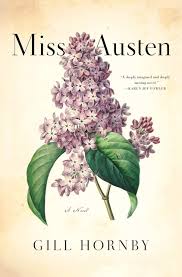
Title: Pride, Prejudice and Other Flavours
Author: Sonali Dev
Published: May 7, 2019; William Morrow
I almost didn’t read this book because of the goodreads reviews. (Note to readers: don’t go by goodreads reviews, go by my reviews, muahahahaha). Also, I wondered how this book hadn’t popped up on any of the lists I had come across, and I confused it for a long time with Soniah Kamal’s Unmarrigeable.
PP&F (as I’m going to call it) differs from other South Asian retellings because it reverses the genders. Our Darcy-esque figure here is Dr Trisha Raje, daughter of an Indian prince, now settled in California, while Lizzie is DJ Caine, a chef of Anglo-Indian and Rwandan descent, who has quit his job at a Michelin-starred restaurant in Paris to care for his sister who has been diagnosed with a brain tumour.
By casting Trisha as part of both Indian and Californian royalty – her brother Yash is running for governor – Dev successfully translates the privilege of the 19th C aristocracy. Moreover, Trisha is a neurosurgeon, and her arrogance/confidence in her professional talent has shades of Darcy in Curtis Sittenfeld’s Eligible. Like Darcy, Trisha is not all arrogance. She is also socially awkward, with a tendency for bluntness.
Being a South Asian retelling, of course, we have the big, fat Indian family, complete with patriarch and Bollywood mother. Trisha has fallen out with His Royal Highness (HRH), her father, because of a teenage transgression involving one Julia Wickham, who compromised her brother’s future. But she has a loving sister and cousins, including one who has visions. The added spice is DJ’s cooking, which seems to have almost magical qualities.
DJ is thrown into Trisha’s path because she is treating his sister, but also because he is catering her brother’s fundraiser. And, of course, they get off to a bad start.
I didn’t expect to like this novel as much as I did. It was very different from the other retellings I’ve read in the past in that the correspondences between the characters and those of the original P&P weren’t evident. But that increased the pleasure when one discovered the resonances.
Also, as I’ve said before, a good P&P retelling brings somethings new to the table. PP&F tackles class and race privilege, and Indian parents’ expectations of their children. We don’t see too much of the typical pressure to marry and settle down, rather, Trisha and her siblings are held up to high standards of achievement and loyalty, expected to sacrifice themselves at the altar of their parents dreams for them, or at least for the eldest brother.
This was the only off note in the novel for me. HRH never really gets his come-uppance; instead, while not exactly succumbing, Trisha seems to accept that she was somehow at fault. Girl no, daddy was completely out of line, both now and then, and I would have liked someone to stick it to him.
Overall, this was a delectable read and I’m looking forward getting my hands on the sequel Recipe for Persuasion.


